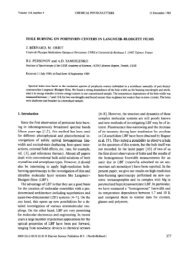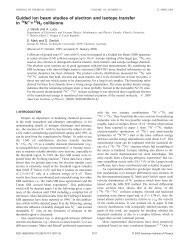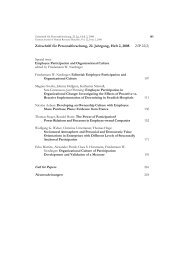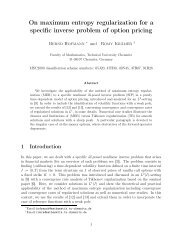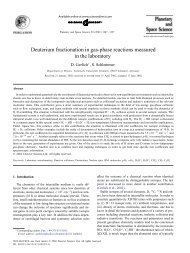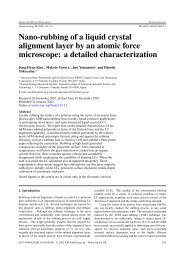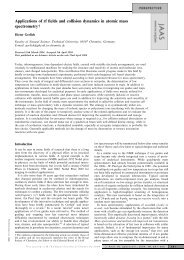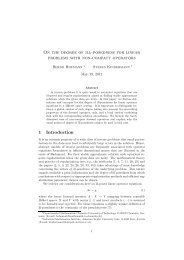On the nature of ill-posedness of an inverse problem arising in option
On the nature of ill-posedness of an inverse problem arising in option
On the nature of ill-posedness of an inverse problem arising in option
You also want an ePaper? Increase the reach of your titles
YUMPU automatically turns print PDFs into web optimized ePapers that Google loves.
<strong>On</strong> <strong>the</strong> <strong>nature</strong> <strong>of</strong> <strong>ill</strong>-<strong>posedness</strong> <strong>of</strong> <strong>an</strong> <strong><strong>in</strong>verse</strong> <strong>problem</strong> <strong>aris<strong>in</strong>g</strong> <strong>in</strong> <strong>option</strong> pric<strong>in</strong>g 1335<br />
volatility<br />
0.4<br />
0.35<br />
0.3<br />
0.25<br />
0.2<br />
0.15<br />
0.1<br />
0.05<br />
maturity<br />
estimated volatility<br />
exact volatility<br />
0<br />
0 0.1 0.2 0.3 0.4 0.5 0.6 0.7 0.8 0.9 1<br />
Figure 1. Unregularized solution (δ = 0.001, α = 0).<br />
volatility<br />
0.4<br />
0.35<br />
0.3<br />
0.25<br />
0.2<br />
0.15<br />
0.1<br />
0.05<br />
maturity<br />
estimated volatility<br />
exact volatility<br />
0<br />
0 0.1 0.2 0.3 0.4 0.5 0.6 0.7 0.8 0.9 1<br />
Figure 2. Regularized solution (δ = 0.001, α = 7.1263 × 10 −7 from <strong>the</strong> L-curve method).<br />
by a po<strong>in</strong>twise <strong>in</strong>version <strong>of</strong> <strong>the</strong> Nemytskii operator N. Inparticular, if <strong>the</strong> rema<strong>in</strong><strong>in</strong>g time to<br />
maturity t j <strong>of</strong> <strong>the</strong> <strong>option</strong> is small, <strong>the</strong> correspond<strong>in</strong>g values Sδ j tend to osc<strong>ill</strong>ate (see figure 3).<br />
This phenomenon is a consequence <strong>of</strong> <strong>the</strong> fact that Sδ (t) tends to zero for small t. Namely,<br />
as shown <strong>in</strong> figure 4, <strong>the</strong> error amplification factor ϕ(t) approximated by ( ∂UBS(X,K,r,t,S(t))<br />
∂s ) −1<br />
grows to <strong>in</strong>f<strong>in</strong>ity as t tends to zero.




